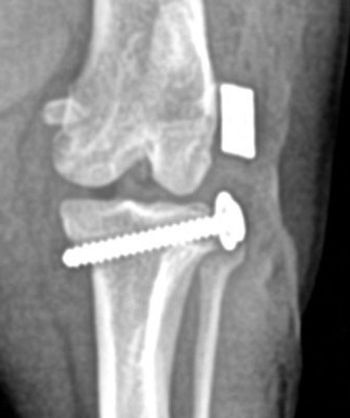
Using multimodal analgesic plans to manage pain
Kyle Bartholomew, DVM, DACVAA, discusses how combining treatment options can lead to improved outcomes.
During a dvm360 interview at the North American Veterinary Community (NAVC) SkillShop in Orlando, Florida, Kyle Bartholomew, DVM, DACVAA, clinical assistant professor of veterinary anesthesia at the University of Wisconsin School of Veterinary Medicine, discusses how multimodal analgesic plans can benefit patients experiencing pain. Bartholomew recently served as an instructor for the Small Animal Anesthesia for the Practice Team course at the continuing education event. He presented lectures and provided lab instruction with colleagues over 4 days, including a session on balanced anesthesia and analgesia.
RELATED:
The following is a transcript of the video:
Kyle Bartholomew, DVM, DACVAA: Multimodal analgesic plans can benefit patients by combining multiple analgesics for 1 painful condition. The reason we use multimodal analgesia is because pain is incredibly complicated, so each patient can benefit from attacking it via different pathways with different analgesics. Also, the analgesics we use often have some [adverse] effects. People think of ileus or nausea, [gastrointestinal] upset with opioids—those will also increase the higher the dose goes. So, we use multiple analgesics combined...to help reduce the negative [adverse] effects that patients can experience with high doses of each individual analgesic.
View more from the
Training new leaders with CPR instructor certification course : Kenichiro Yagi, MS, RVT, VTS (ECC, SAIM), program director for the RECOVER Initiative; and Dan Fletcher, DVM, PhD, DACVECC, cochair of the RECOVER Initiative, discuss the RECOVER CPR course. Additionally, new instructors Jennifer Dow, RVT, VTS (ECC); and Anita Parker, RVN, AVN, VTS (Anesthesia & Analgesia), CVPP, talk about what they’ve gained from hands-on experience.Providing services for chelonians : La'Toya Latney, DVM, DECZM (ZHM), DABVP (Reptile & Amphibian), CertAqV, senior veterinarian at The Schwarzman Animal Medical Center in New York, New York, provides insights for general practitioners caring for chelonians and how practices can use tools they already have in the clinic to examine turtles, terrapins, and tortoises.Using total intravenous anesthesia in certain cases : Marlis Rezende, DVM, PhD, MSc, DACVAA, an associate professor of anesthesia and pain management at Colorado State University College of Veterinary Medicine and Biological Sciences in Fort Collins, discusses total intravenous anesthesia and the common conditions she sees in practice that best utilize this method of pain management.
Newsletter
From exam room tips to practice management insights, get trusted veterinary news delivered straight to your inbox—subscribe to dvm360.






